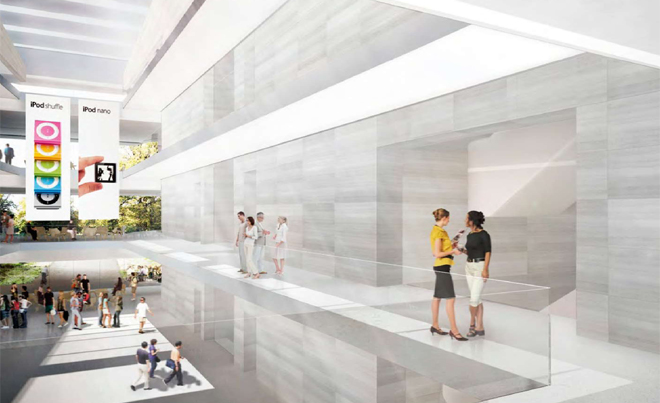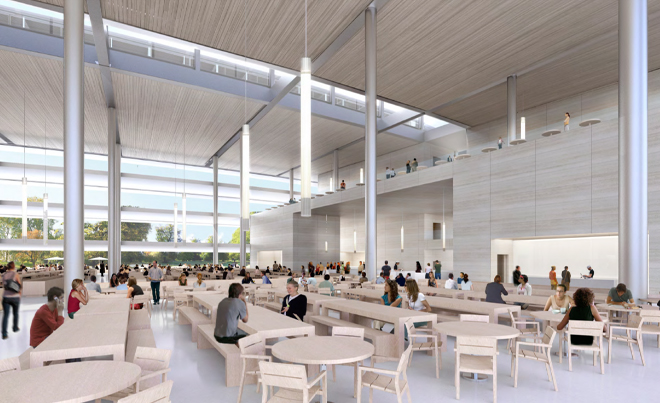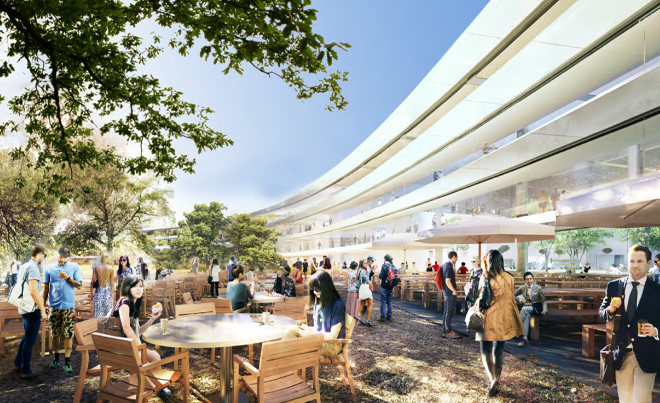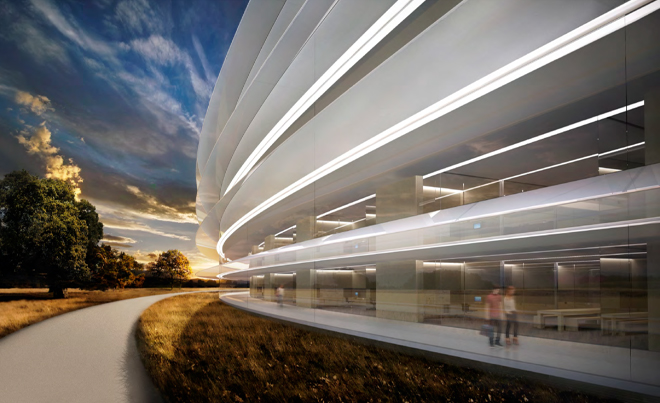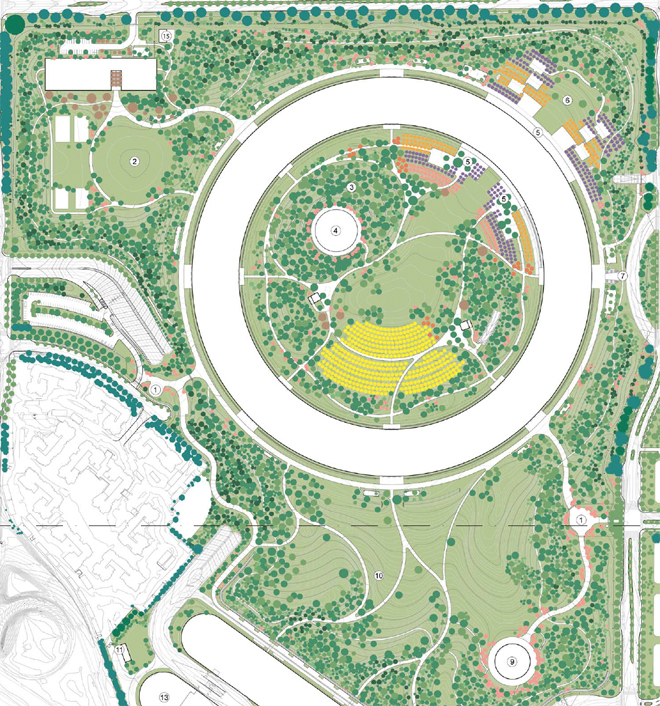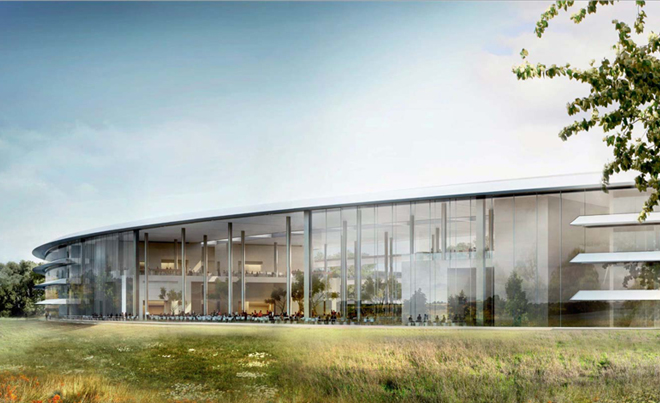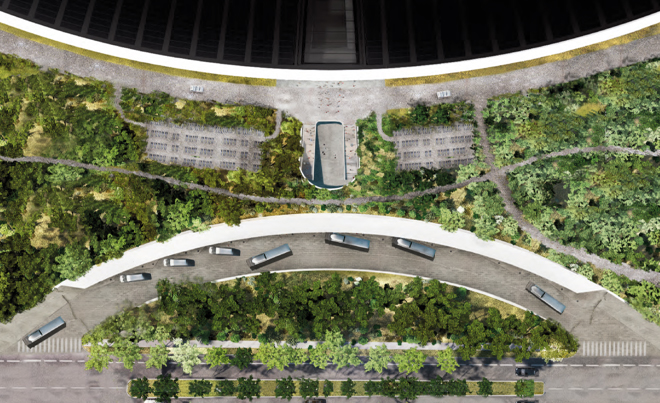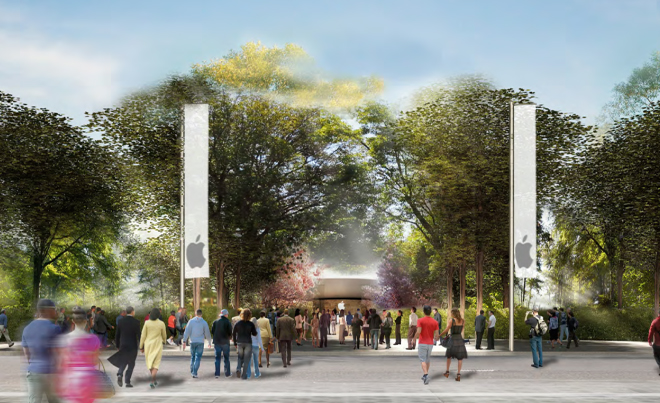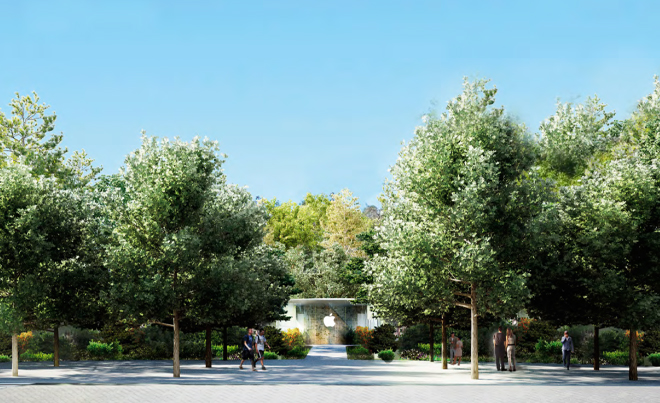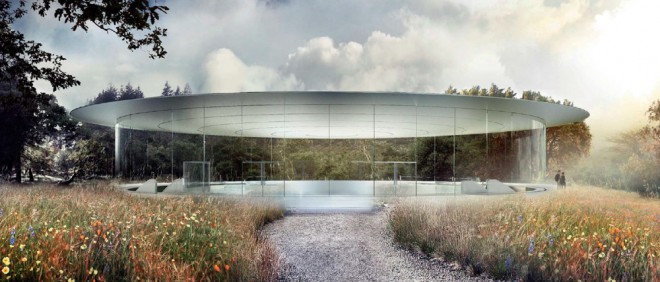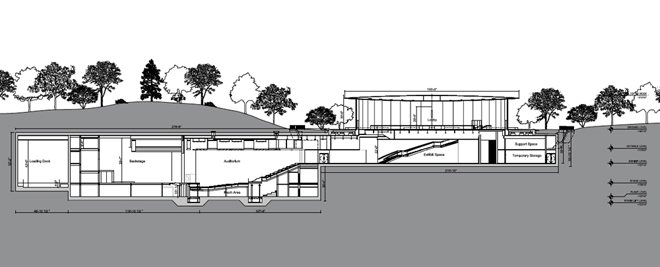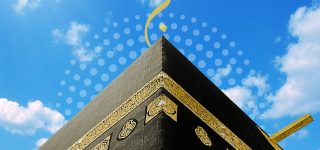At this point, there’s a good chance you’ve seen pictures of Apple’s proposed new headquarters — a 2.8-million-square-foot spaceship parked in a verdant man-made forest in the northeast corner of Cupertino. Since the first dozen or so renderings trickled out in 2011, however, we haven’t gotten a much better sense of what all the new campus will entail or what it will be like to work there. Until now. Apple may be known for its secrecy, but buried in Cupertino’s municipal archive is a wealth of detail on the project — including more than 20 previously unseen renderings of the new campus.
In these images, we see for the first time the space port-like entrance to the development’s subterranean parking lot, a cavernous cafeteria that spills into the grassy landscape beyond, and the glass pavilion that will serve as the entrance to Apple’s new underground auditorium — a secure lair where press will gather for future product launches. In short, these documents give us the most complete picture of Apple’s new home yet, a campus that Steve Jobs himself thought had a shot at being “the best office building in the world.†Here’s a peek at life in the mothership.
The Mothership
Apple Campus 2, which was approved by city officials last month, will sit on a 176-acre plot in the South Bay city of 60,000 — a site that was once home to HP and Compaq. If you’re an Apple employee who drives to work, you’ll enter the campus at a freshly constructed security point at North Wolfe Road, on the west edge of the site.
The lucky ones will quickly be diverted into a discrete, futuristic tunnel, where a subterranean service road will give them access to a two-level, 2,000-space parking garage underneath the mothership itself. Otherwise, you’ll have to wind your way to the south edge of the campus to the above-ground parking garage — a pair of emory board-shaped structures, clad with solar panels and foliage.
If you take advantage of Apple’s shuttle buses from elsewhere in the Bay Area, you’ll be dropped off at the “Corporate Transit Center†on the eastern edge of the site. From there a walkway, flanked by two Apple Store-white staircases, will lead into the mothership itself.
Bringing California Back to Cupertino
In the company’s own words, the new campus will offer “a serene environment reflecting Apple’s brand values of innovation, ease of use and beauty.†Despite the mothership’s sustainable credentials, though, the greenest part of the development isn’t even the building itself — it’s everything surrounding it. The renderings show something that hardly resembles a corporate campus it all. What it is, really, is a huge park.
Apple’s proposals describe the future landscape as “an ecologically rich oak savanna reminiscent of the early Santa Clara Valley.†Norman Foster says that Jobs wanted the campus to evoke the California of his childhood, one he “still remembered…as the fruit bowl of America.†What it all means is that David Muffly, Apple’s Senior Arborist, presumably has his hands full (yes, that’s his real job title).
Muffly and the other landscape designers on the job have plotted the site down to the very last tree. Inside the main building, not far from a sizable fountain, workers will enjoy a cluster of Apple trees. Over by the entrance to the cafeteria, you’ll find rows of cherries, plums, and apricot trees, with persimmons sprinkled just beyond those. More of the same will be found outside the ring, on the other side of the cafeteria, where employees will be able to dine al fresco in an area Apple’s calling “the glade.â€
Which all sounds nice and lovely. But Apple’s new campus isn’t beyond criticism. It’s still a fortress of solitude. That gorgeous green space is for employees only (whereas, for instance, California’s natural coastline is protected public space), and the city of Cupertino will face all sorts of unpleasantries as a result, like traffic congestion. It also does nothing to solve the Bay Area’s housing crisis, which is itself inflated by companies like Apple.
Indeed, Apple is building what could be one of the most beautiful corporate spaces ever conceived, but unlike the company’s computers and phones, which democratized good technology design for us all, the Apple mothership is just for Apple.
An Underground Auditorium
The campus won’t be exclusively for the enjoyment of its employees. Every few months, a select group of outsiders will be allowed in to visit a separate structure nestled among the wildlife: Apple’s new corporate auditorium.
Instead of meeting the press at a venue like the Moscone Center in San Francisco, Tim Cook has said that the intention is to summon reporters to its custom-designed auditorium for all future events. And from the look of things, it will be a nice place to see a product launch. Instead of a reality distortion field, the new 1,000-seat facility sits underneath an actual one, with a grassy runway leading up to the auditorium’s glass entryway.
Visitors will enter through this stark glass pavilion — it’s topped with a saucer-like roof of its own — and descend into a subterranean theater for the main event.
The auditorium’s design isn’t altogether unlike that of the Fifth Avenue Apple Store in New York City — one that Steve Jobs reportedly sketched himself in its earliest stages. And by all accounts, Jobs was hands-on in the development of the new campus, too.
In the presentation video above, Foster recalls the genesis of the collaboration, when Jobs called the architect out of the blue one day in 2009. “Hi Norman, I need some help,†Jobs said, and three weeks later they were meeting in person. “One of the most memorable things and perhaps vital to the project was Steve saying, ‘Don’t think of me as a client, think of me as one of your team,’†Foster says.
As with so many of Apple’s products, the unique blend of vision and precise detail won’t come cheap. Earlier this year, the Businessweek report put the project’s budget at $5 billion and growing. And again, the wisdom of the design is up for debate: there’s no telling if the ringed design floor plan will foster collaboration or stifle it.
Still, a stubborn adherence to a singular vision is what gave us trailblazing products like the iPhone and the iPad. Maybe the formula will work for a headquarters, too. As Whisenhunt, the Apple exec, told the Cupertino officials in October, when it comes to the new campus, “You can be sure that, following Steve’s lead, we’ve used the same care and the same meticulous attention to detail we put into every Apple product.â€
source : wired



